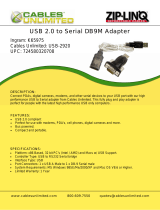
Hardware Guide
Welcome
7
nN
Welcome
Congratulations on purchasing a Sony VAIO computer. Sony has combined leading-edge technology in
audio, video, computing and communications to provide you with state-of-the-art personal computing.
Here are the main features you can enjoy:
❑ Exceptional performance.
❑ Dual drives – Enjoy the freedom of two optical disc drives.
❑ Sony audio and video quality – The advanced graphics card and high-quality external stereo speakers
enable you to take advantage of today’s advanced multimedia applications, games, and entertainment
software.
❑ Multimedia features – Enjoy audio and video CDs and DVDs, even record them yourself.
❑ Giga Pocket* – Take advantage of the new Giga Pocket technology, allowing you to watch TV and
record your favourite programs digitally and by remote control.
❑ Sony Memory Stick slot – This compact digital storage medium allows you to easily transfer images,
sounds, data and text between cameras, computers, and more.
❑ Interconnectivity – Your computer has Memory Stick, USB 2.0, i.LINK, CompactFlash and SmartMedia
functionalities.
❑ Windows XP – Your system includes the latest consumer operating system from Microsoft.
❑ Excellent customer support – If you are experiencing any problems with your computer, please check
the VAIO-Link website for a possible solution: www.vaio-link.com
. Before contacting VAIO-Link, please
try to solve the problem by reading this guide, your printed Guide to Troubleshooting, or the manuals
and help files for the peripherals or software.
* Not available on all models. See the printed Specifications sheet for details.























